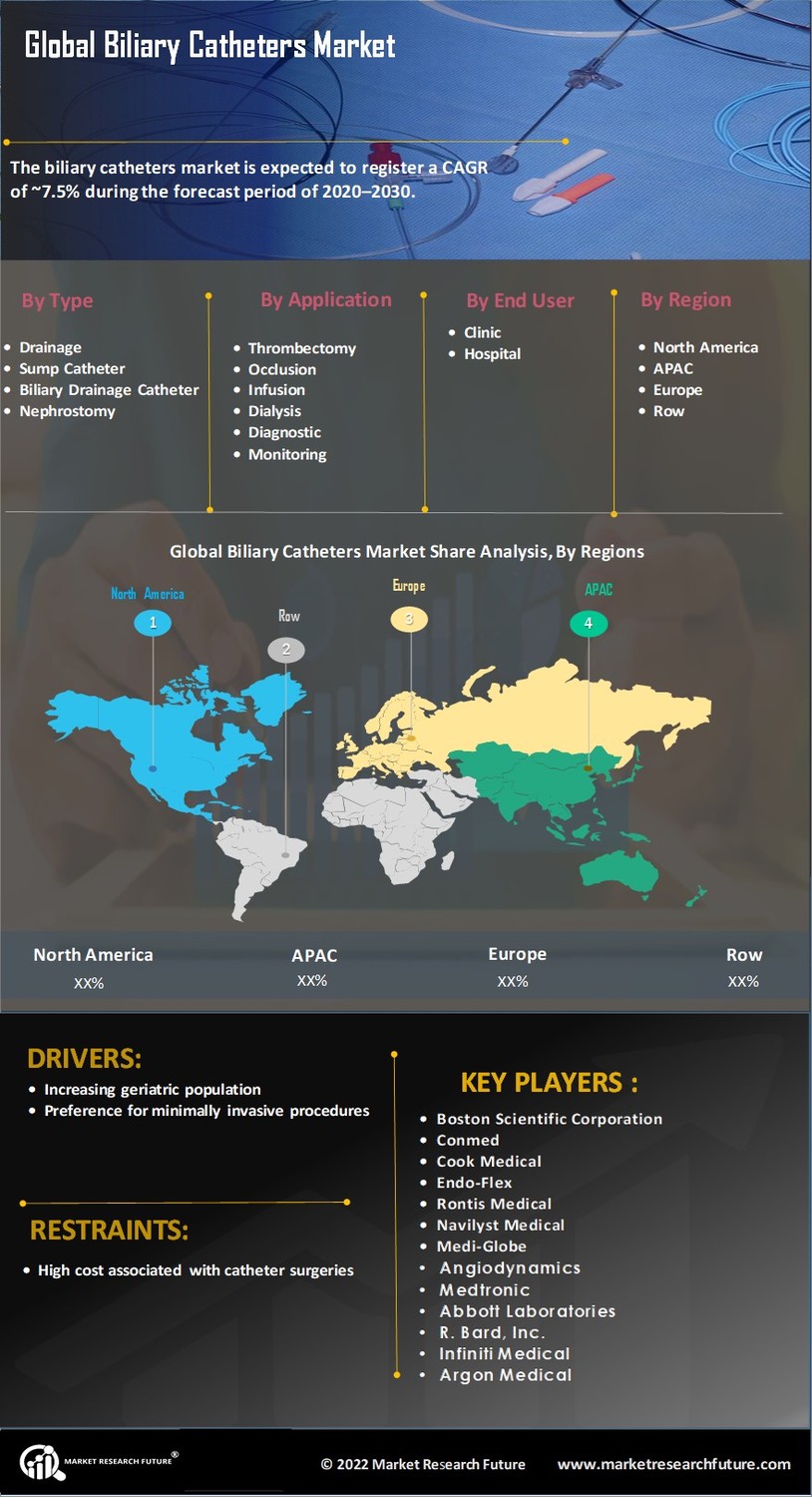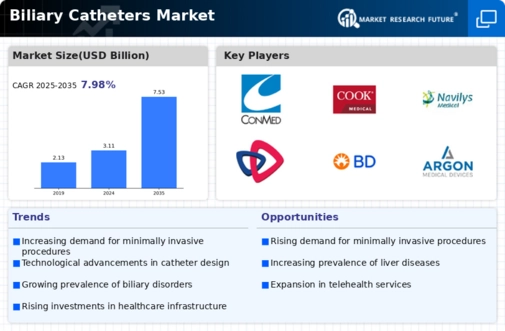Market Growth Projections
The Global Biliary Catheters Market Industry is projected to experience substantial growth over the next decade. With a market value of approximately 3.11 USD Billion in 2024, the industry is expected to expand significantly, reaching around 7.53 USD Billion by 2035. This growth trajectory, characterized by a CAGR of 8.37% from 2025 to 2035, reflects the increasing demand for biliary catheters driven by various factors such as technological advancements, rising healthcare expenditures, and an aging population. The market's potential is indicative of the critical role biliary catheters play in modern healthcare.
Growing Awareness and Education
Increased awareness and education regarding biliary health contribute positively to the Global Biliary Catheters Market Industry. Healthcare professionals and patients are becoming more informed about biliary disorders and the importance of timely interventions. Campaigns aimed at educating the public about symptoms and treatment options are gaining traction, leading to earlier diagnoses and increased demand for biliary catheters. This heightened awareness is likely to drive market growth, as more individuals seek medical attention for biliary issues. Consequently, the industry is expected to benefit from a more proactive approach to biliary health management.
Increasing Healthcare Expenditure
The Global Biliary Catheters Market Industry benefits from rising healthcare expenditures across various regions. Governments and private sectors are investing more in healthcare infrastructure, which includes the procurement of advanced medical devices such as biliary catheters. This trend is particularly evident in developing countries, where improved access to healthcare services is leading to higher demand for effective treatment options. As healthcare spending continues to rise, the market is projected to grow significantly, potentially reaching 7.53 USD Billion by 2035. This financial commitment to healthcare is likely to enhance the availability and quality of biliary catheter solutions.
Rising Incidence of Biliary Disorders
The Global Biliary Catheters Market Industry experiences growth due to the increasing prevalence of biliary disorders such as cholangitis and biliary obstruction. As healthcare systems worldwide report a rise in these conditions, the demand for effective drainage solutions intensifies. For instance, the World Health Organization indicates that biliary tract diseases are becoming more common, particularly in aging populations. This trend is expected to drive the market's expansion, with projections suggesting that the industry will reach approximately 3.11 USD Billion in 2024. The need for timely interventions and advanced catheter technologies further supports this growth.
Aging Population and Lifestyle Changes
The demographic shift towards an aging population, coupled with lifestyle changes, is a significant driver for the Global Biliary Catheters Market Industry. Older adults are more susceptible to biliary disorders due to age-related physiological changes and lifestyle factors such as diet and sedentary behavior. As the global population ages, the incidence of biliary diseases is likely to increase, necessitating the use of biliary catheters for effective management. This trend underscores the importance of addressing the healthcare needs of older adults, which is expected to propel the market forward in the coming years.
Technological Advancements in Catheter Design
Innovations in catheter technology significantly contribute to the Global Biliary Catheters Market Industry's development. Enhanced designs, such as biodegradable materials and advanced imaging capabilities, improve patient outcomes and procedural efficiency. For example, the introduction of self-expanding metal stents has revolutionized biliary drainage procedures, allowing for better management of obstructions. These advancements not only enhance the effectiveness of treatments but also reduce the risk of complications. As the industry evolves, the anticipated growth rate of 8.37% CAGR from 2025 to 2035 indicates a robust future driven by continuous innovation in catheter design.









